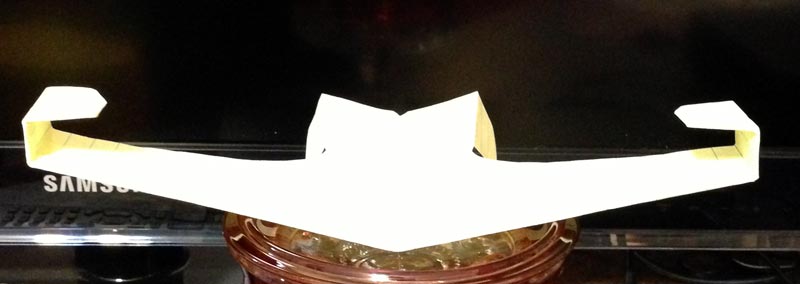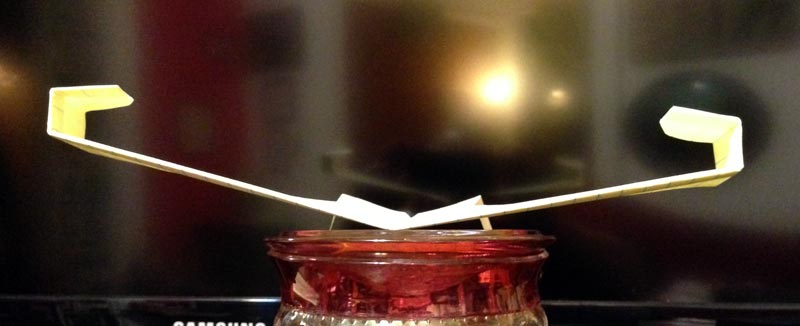http://ntrs.nasa.gov/archive/nasa/casi.ntrs.nasa.gov/19960023622_1996039477.pdf is a 1995 paper in which a genetic algorithm was set to design an airplane wing of fixed lift and span, minimizing drag. The result after 120 iterations was the C wing.


This uses a legal-size sheet of 16-pound paper. ( 8-1/2″ x 14″ or 216mm x 355.6mm and 60 grams per square meter). The full sheet of paper is 4.6 grams, or about 4 grams for the completed airplane. The rolled leading edge taped flat and folded is enough structure to keep the upper horizontal surface of the C wingtips relatively flat. The fold needs to be refreshed to remain horizontal. This plane flies quite well, with a L/D of 6 or more. No flutter when flying in circles or in glides. The original Barnaby glider had a full wingtip fold instead of a winglet. Who would have thought in 1908 a second fold would be a breakthrough in aerodynamics in 1995?
A small cut about a quarter of the way in on the initial folds that create the vertical wing panels allows the trailing edge of the wings more camber, which improves the L/D to 7. In addition, this provides more adjustment of the wing loading, which must be equal in order to fly in circles and return at the same altitude.